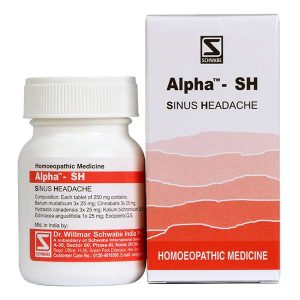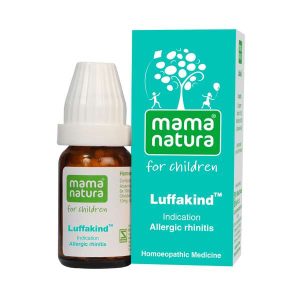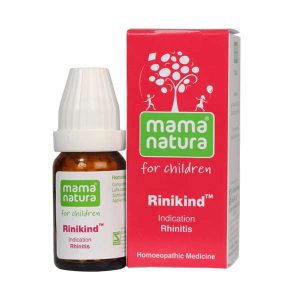
Allergic rhinitis
-
-18%
 Rated 5.00 out of 5 based on 3 customer ratings(4)
Rated 5.00 out of 5 based on 3 customer ratings(4)₹198.00₹162.36 You Save: ₹35.64 (18%)Add to cart -
-18%

-
-18%
 Rated 5.00 out of 5 based on 1 customer rating(1)
Rated 5.00 out of 5 based on 1 customer rating(1)₹125.00₹102.50 You Save: ₹22.50 (18%)Add to cart -
-18%

Showing all 4 results
Allergic rhinitis is also known as hay fever. It is an exaggerated response of the immune system to environmental triggers such as pollens, weeds and cat dander.
Allergic rhinitis is of two types
Seasonal Allergic rhinitis- It occurs only during that time of the year in which certain plants pollinates. In spring season, hay fever is commonly due to tree pollen. In summers grass and weed pollens cause hay fever. In autumn weeds are the triggering agents, while primarily from late march through November fungus spores cause hay fever.
Perennial Allergic rhinitis – It occurs throughout the year. People with this type of allergic rhinitis are found to be usually allergic to one or more allergens present indoors. These includes animal dander i.e. the tiny skin flakes of animals such as cats and dogs that is shed along with fur, feathers and house dust mites. They may be found on beddings, heavy draperies, pillows, carpet and upholstery. Mold is another common allergen which is usually found in damp areas such as basements and bathrooms.
Signs & Symptoms
These include the following:
- Prolonged and sometimes violent sneezing.
- Itchy nose, throat and roof of mouth.
- Stuffy or runny nose.
- Post nasal drip
- Cough due to post nasal drip.
- Watery and itchy eyes.
- Head and nasal congestion
- Ear pressure and fullness
- Fatigue
- Dark circles commonly known as allergic shiners under the eyes
- Sinusitis due to blockage of sinus drainage openings by the swollen nasal membranes.
- Nasal polyps which are small non cancerous growths
- Nosebleeds can also occur during hay fever attacks.
Causes
Hay fever is found to be genetically determined. Majority of patients with allergic rhinitis have their parents or siblings who are also suffering from some form of allergy. Also people with eczema and asthma are more commonly found to develop hay fever.
Hay fever occurs when the immune system of the body views harmless agents like inhaled pollens as dangerous substances entering the body. The immune system then overreacts and floods the bloodstream with chemicals like histamines and leukotriens. These chemicals in turn inflame the lining of the nasal passages, sinuses and eyelids and thus produce symptoms associated with hay fever.
The various symptoms of hay fever are in fact meant to protect the body from the allergens either by trapping and expelling them or by swelling the body areas to avoid the entry of the allergens.
Diagnosis
Hay fever can be diagnosed by the physician based on symptoms present and physical examination. If required doctors can advise skin and blood tests to see how the body reacts to certain substances. During the skin tests the doctor pricks the back or arm of the patient with tiny tubes containing common allergens. If the body is allergic to any of them then the skin at the test site becomes red, itchy or swollen.
In the blood tests when the allergen binds to the antibodies produced by the body in response to allergy in the nose, eyes or mouth, chemicals are released by the body that cause the above symptoms.
General Management
Although mostly an inherited trait allergic rhinitis can be managed with some simple steps.
A lot of sneezing and itching can be kept in check by steering clear of the things that trigger them.
- Keep the home and surroundings clean. If one has severe allergies one must try and avoid doing the cleaning them self.
- When outside wear a hat with a brim to protect the face and hair.
- On going inside one must wash their face and hands and change clothes. If possible one can take a shower at night.
- Follow a healthy lifestyle by including well balanced and nutritious diet and getting regular exercise to boost their immune system.
- In case of seasonal allergies one must limit outdoor activities when pollen counts are high.
- Nasal irrigation and saline sprays using salt and boiled, sterile or distilled water can be used to help remove allergen particles from the nose.
Homeopathic Treatment
Homeopathy provides the best solution for treating allergic rhinitis. Well selected homeopathic medicine not only helps to alleviate the present troublesome symptoms of allergic rhinitis in a patient but it eventually eliminates the very tendency of the immune system to produce such an exaggerated response to harmless allergens in the surroundings. For this a homeopathic physician takes a detailed case record of the patient and elicits symptoms pertaining to both the mental and physical sphere. The best selected homeopathic medicine is the one most similar to this symptom presentation.
Also unlike Allopathic treatment for allergic rhinitis that causes various side effects such as drowsiness and dryness of nasal mucosa, no side effects have been noticed from the prolonged use of homeopathic medicines that are prescribed by homeopathic physician to treat allergic rhinitis.
Commonly indicated homeopathic medicines to treat allergic rhinitis are:
- Allium Cepa- It is indicated when allergic rhinitis occurs mainly in damp cold weather. The symptoms such as sneezing and running nose are triggered on entering a warm room and in the evening and are better on going out in the open air. There is feeling of a lump at the root of the nose. The discharge from the nose is typically copious, watery and extremely acrid. Accompanying the nasal discharge there is much burning and smarting lachrymation. Eyes are suffused with profuse and bland lachrymation which also gets better in open air. Fluent coryza with headache, cough and hoarseness can also be present. Allium cepa can also help treat nasal polyps.
- Arsenic Album- It is indicated in allergic rhinitis with symptoms such as sneezing and thin, watery and excoriating discharge from the nose. The nose feels stopped up and there can be accompanying burning and bleeding from the nose. The symptoms are typically worse in open air and better indoors and from warm application. Along with these particular symptoms, general symptoms like great prostration from slightest exertion , thirst for small sips of water at frequent intervals , nightly aggravation of symptoms and much restlessness further confirms Arsenic Album in a given case.
- Euphrasia Officinalis– It is indicated when there is much fluent nasal discharge which is bland and always accompanied with profuse and acrid lachrymation. The symptoms get worse in the evening and are better when out in open air.
- Natrum Muriaticum- It is indicated when there is sneezing and fluent coryza with squirming sensation in nose as of a small worm. The nasal discharge is thin and watery like white of an egg. It continues for one to three days and then changes to stoppage of nose making breathing difficult. There may be associated loss of smell and taste. These symptoms of hay fever are brought on by exposure to sun or intense summer heat. Along with these particular symptoms other characteristic general symptoms of Natrum Muriaticum may also be present. These includes great emaciation especially of neck, loosing flesh despite eating well, craving for salt, headache on going out in sun and marked disposition to weep without any apparent cause such that consolation from others aggravates the trouble.
- Sabadilla- It is indicated in allergic rhinitis with spasmodic sneezing and runny nose. The nasal discharge is copious and watery. Coryza is commonly accompanied with severe frontal pain and congested eyes with lachrymation. Symptoms are worse in cold outdoor air and from flower pollens and better from warm drinks and warm room.
- Sanguinaria – It is indicated when the nasal mucus membrane is dry and congested. Nasal polyps may be present. Sudden stopping of coryza is generally followed by diarrhoea in such patients. Apart from this the person has a marked vasomotor disturbance as seen in the circumscribed redness of cheeks, flashes of heat, burning in palms and soles and distention of temporal veins.
- Sticta Pulmonaria– It is indicated in hay fever with incessant sneezing. There is feeling of fullness at the root of the nose with the constant need to blow the nose. The nasal membrane is dry with no discharge on blowing the nose. The cold is generally preceded or accompanied by rheumatic pains such as stiffness of neck.
- Wyethia- It is indicated when there is much itching in posterior nares and palate causing the patient to constantly hem and clear his throat without much relief from clearing. This is generally accompanied by dry, hacking cough and a tendency to get hoarseness while singing or talking.
Blog Post


Effects of Diabetes, Smoking, and Other Factors on Sexual Health


Plant-based Protein vs. Animal Protein: Which is Better for Your Health?































